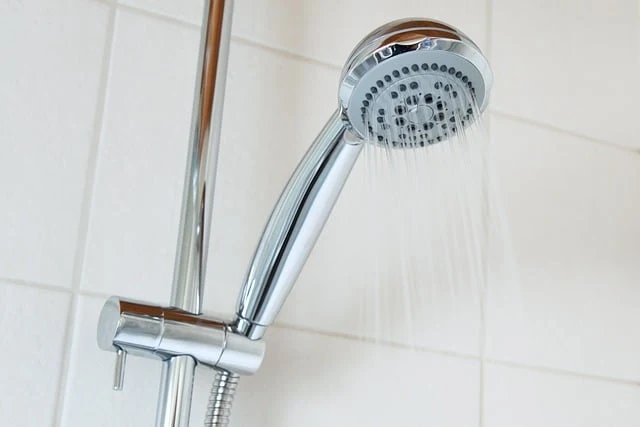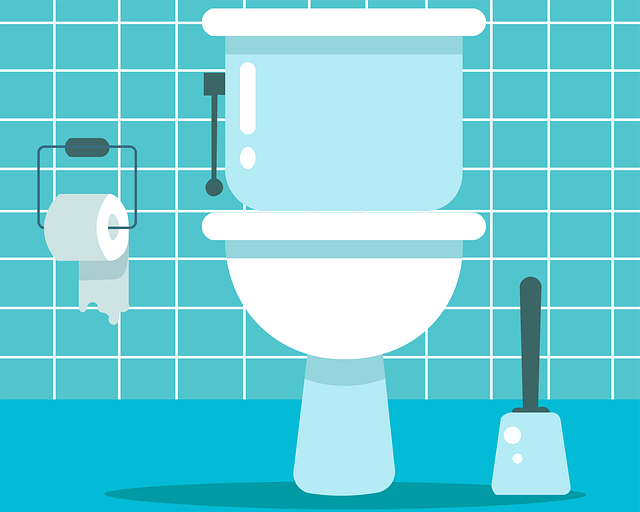The debate over peeing in the shower continues, with many advocating for the practice due to its water-saving benefits. However, Dr. Alicia Jeffrey-Thomas, a pelvic health specialist, warns that for those assigned female at birth, this habit could have unintended health consequences.
The Water Conservation Argument

One of the strongest arguments for urinating in the shower is its potential to save water. By eliminating the need for a separate toilet flush, a person could save approximately 2,190 liters (579 gallons) of water per year. If the entire U.S. population adopted this practice, it could lead to an annual water savings of 699 billion liters (185 billion gallons). This significant reduction in water consumption highlights the environmental advantages of shower urination.
Potential Health Risks: The Pelvic Floor Connection
Despite the environmental benefits, the potential health consequences of this habit must be considered. Dr. Jeffrey-Thomas explains in a TikTok video that regularly peeing in the shower may lead to pelvic floor and bladder control issues.
The Pavlovian Response
Dr. Jeffrey-Thomas likens this habit to Pavlov’s classical conditioning experiment, where dogs learned to associate the sound of a bell with food. Similarly, repeatedly urinating in the shower can train the brain to link the sound of running water with the urge to pee. This association may result in involuntary urination triggered by running water sounds, such as a faucet, toilet flush, or even rain.

Pelvic Floor Dysfunction Risks
For individuals with existing pelvic floor dysfunction, this learned association can exacerbate bladder control problems. Dr. Jeffrey-Thomas explains that urinating while standing in the shower does not allow the pelvic floor muscles to fully relax, potentially leading to incomplete bladder emptying. Over time, this can contribute to urinary retention and increase the risk of urinary tract infections (UTIs).
Some argue that squatting while urinating in the shower might alleviate pelvic floor strain. Dr. Jeffrey-Thomas acknowledges that a full squat position allows for better pelvic floor relaxation, but she still advises against making shower urination a habit. If one must urinate in the shower, a proper squatting position is preferable to standing.
Why Doesn’t Toilet Flushing Trigger the Same Response?

A common question is why flushing the toilet doesn’t condition the brain in the same way. Dr. Jeffrey-Thomas clarifies that by the time a person flushes the toilet, they have already urinated, so no association is formed. However, individuals who struggle to resist the urge to urinate when exposed to running water may already have underlying bladder control issues.
Understanding Pelvic Floor Dysfunction

Pelvic floor dysfunction is a common condition, particularly among women. The pelvic floor is a group of muscles that support the bladder, uterus, rectum, and other organs. Dysfunction occurs when these muscles become too weak or too tight, leading to symptoms such as:
- Urinary and bowel incontinence
- Lower back pain
- Pain during intercourse
- Increased urgency or frequency of urination

Factors such as childbirth, surgery, aging, obesity, and high-impact activities can contribute to pelvic floor dysfunction. Given that urinating in the shower might worsen symptoms, individuals should be aware of these risks before adopting the habit.
The Biological Factor: Why Female Anatomy Matters
Dr. Jeffrey-Thomas emphasizes that those with female anatomy are not designed to urinate while standing. Unlike male anatomy, where the positioning allows for better bladder emptying while standing, females may struggle to fully relax the pelvic floor in this position. This can lead to incomplete bladder emptying, increasing the risk of UTIs and other urinary complications.
Pros and Cons of Peeing in the Shower

Pros:
- Water conservation: Reduces toilet water usage significantly.
- Convenience: Saves time, particularly during a rushed morning routine.

Cons:
- Pelvic floor health risks: May contribute to bladder control issues and pelvic dysfunction.
- Conditioned response: Can create an involuntary urge to urinate when exposed to running water.
- Sanitation concerns: While urine is mostly sterile, it can still contain bacteria that may pose hygiene risks.

The Bottom Line
While peeing in the shower may seem like an eco-friendly and convenient habit, it is important to weigh the potential health risks. Dr. Alicia Jeffrey-Thomas’s insights serve as a reminder to consider the long-term effects of our daily routines. Striving for sustainability should not come at the cost of personal health. Ultimately, making an informed decision based on both environmental and health factors is key to maintaining overall well-being.
Minha sogra gananciosa comeu meu jantar e fez uma postagem no Facebook em vez de se desculpar

Depois que uma mulher preparou o jantar para seus filhos, marido e sogra, ela deixou sua porção de comida para si mesma enquanto completava uma tarefa. Quando ela voltou para comer, a comida que ela guardou havia desaparecido.
Uma mulher foi ao Reddit para descobrir se ela estava sendo irracional em sua reação às ações de sua sogra quando ela fez o jantar para toda a família. Ela ficou horrorizada com o evento.
A mulher contou que sua sogra estava em sua casa para jantar e esclareceu que, a menos que fosse um grande evento, sua família comeria no salão, deixando que ela servisse a porção de cada um.

Uma família reunida em volta de uma mesa de jantar | Fonte: Getty Images
A mulher esclareceu que não teve problemas em servir a refeição de todos e levá-la a eles. Ela tinha feito almôndegas suecas com molho, purê de batata, brócolis e pão caseiro, que ela distribuiu e serviu para sua família. No entanto, o que aconteceu depois a incomodou.
O que a sogra da mulher fez?
Depois que a mulher serviu o jantar para sua família, ela deixou sua porção na cozinha enquanto foi lá fora para cuidar de algumas roupas que ela tinha pendurado antes. Ela então voltou para sua cozinha para pegar sua comida.

Almôndegas suecas com purê de batatas | Fonte: Getty Images
A mulher serviu cada porção generosamente, servindo mais do que ela achava que sua família seria capaz de comer. No entanto, quando ela voltou para a cozinha, a comida que ela tinha servido para si mesma tinha sumido. Ela compartilhou :
“Perguntei se alguém sabia o que tinha acontecido com a comida no banco, e MIL interrompeu e disse que queria mais um pouco.”
Depois que sua sogra contou o que aconteceu, a mulher notou que o prato de sua sogra estava cheio de almôndegas. A mulher pensou que sua sogra tinha servido mais comida do que ela conseguia comer.

Uma mulher idosa comendo na cozinha | Fonte: Getty Images
Embora a mulher tenha ficado chocada, ela acreditava que talvez tivesse feito pouca comida para sua sogra e decidiu comer fast food mais tarde naquela noite, pois pensou que sua sogra pudesse estar “com muita fome”. No entanto, as ações subsequentes de sua sogra a chocaram.
O que aconteceu depois?
A mulher estava bem com a sogra pegando sua porção de comida, mas ficou chateada com o que aconteceu depois. Quando a sogra comeu até ficar satisfeita, ela perguntou se poderia ter um recipiente para levar o restante da comida para casa para o jantar na noite seguinte.

Mulher furiosa sendo consolada por um homem | Fonte: Getty Images
Ela ficou muito irritada com a sogra e disse que a comida que sobrou era para ser seu jantar naquela noite, não para ela levar para casa para jantar na noite seguinte.
Depois de ouvir isso, a sogra da mulher disse que ela poderia ficar com a comida restante. A mulher recusou, explicando que não queria comer as sobras do jantar da sogra e dando a ela um recipiente para levar a comida para casa.
Mais tarde, o marido da mulher perguntou a ela o que havia acontecido. Ela explicou que estava chateada porque tinha cozinhado a refeição e não conseguiu comê-la e estava com fome. O marido da mulher concordou e mandou uma mensagem para sua mãe para avisá-la que ela estava passando dos limites e pediu que ela se desculpasse.
No entanto, em vez de se desculpar, a mãe da mulher disse que ela tinha sido rude e deveria ter cozinhado mais, prevendo que sua sogra poderia querer levar comida para casa.
A sogra então foi às redes sociais para compartilhar a história, com aqueles que viram as postagens dizendo que a mulher era uma péssima anfitriã e errada por não cozinhar o suficiente para sua sogra levar comida para casa. Ela disse :
“Devo acrescentar também que estou grávida e sinto que às vezes posso ser bastante irracional por causa dos hormônios.”
A resposta à sua pergunta foi retumbante, com muitos internautas dizendo que ela não estava sendo nem um pouco irracional por esperar poder comer a refeição que ela havia preparado. Muitos a apoiaram dizendo que sua sogra foi rude por esperar sobras.



Leave a Reply